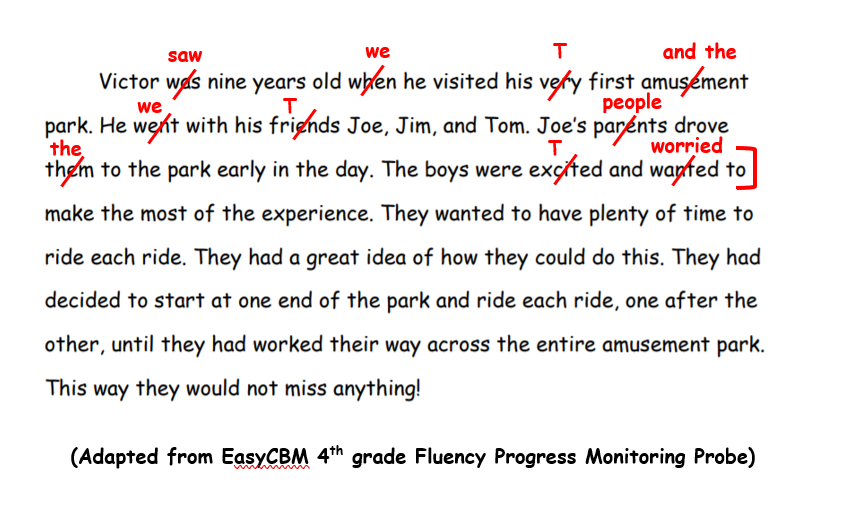Data-Based Individualization Case Study Part Three

Mr. Williams has examine Joe’s progress monitoring data with the aim line and determined that Joe is not responsive to the current prescriptive reading intervention.
The next step of the DBI process is conducting diagnostic assessment to help identify the areas in instruction that may require adaptations.
Let’s see how Mr. Williams conducts the assessments and if he identifies adaptations for Joe’s instruction.

(Source: National Institute for Intensive Intervention)
Now that Mr. Williams has identified that Joe is not responding the the current reading instruction, looks at the next step in the DBI process and decides to conduct some additional assessments on Joe to identify what adaptations he will make to Joe’s instruction.
He looks at Joe’s progress monitoring probes and see that Joe consistently missing sight words, words with long vowels and multi-syllabic words. He also consults Joe’s current benchmark scores and sees that on the Fall Benchmark fluency probe for 4th grade that the school takes he is reading at the 10th percentile. This is well below the benchmark for 4th.

He hypothesizes that there may be some areas that Joe needs targeted instruction in. Based of what he has seen from Joe’s current fluency probes and his benchmark score.
Mr. Williams selected the following assessments to confirm his hypothesis.

Sight Words Assessment

Long vowel Assessment

Multi-syllabic Word Assessment
Mr. Williams conducted the assessments and recorded them in his F.AC.TR. worksheet. Here are the results of his assessments.
|
Fact |
Assumed Cause | Test | Result |
|
Joe reads with poor fluency and is currently reading on an early 2nd grade level which is below the 4th grade benchmark for reading. |
Joe cannot accurately and decode words with long vowels. |
Second, third and fourth grade lists of long vowels and vowel teams |
No, Joe cannot accurately decode words with long vowels |
|
Joe cannot accurately decode multi-syllabic words. |
Second, third and fourth grade regularly spelled multi-syllabic words
|
No, Joe cannot accurately decode multi-syllabic words |
|
|
Joe cannot identify and read common sight words by sight. |
Dolch 220-word sight word list |
No, Joe cannot identify and read common sight words |
Based upon the results of the diagnostic assessments, Mr. Williams has determined that instructional adaptations are needed for Joe. He will consult the information from the National institute for Intensive Intervention that he received during is professional development.
Now that Mr. Williams has begun the DBI process, let’s visit Case Study Part Two to see how Mr. Williams uses the DBI process to adapt Joe’s instruction.
Click on the image below to see Case Study Part 4.
References:
DBI Process Overview. (n.d.). Retrieved October 27, 2019, from https://intensiveintervention.org/resource/dbi-process-overview.
EasyCBM Progress Monitoring Probes. (n.d.). Retrieved October 27, 2019, from https://app.easycbm.com/.

